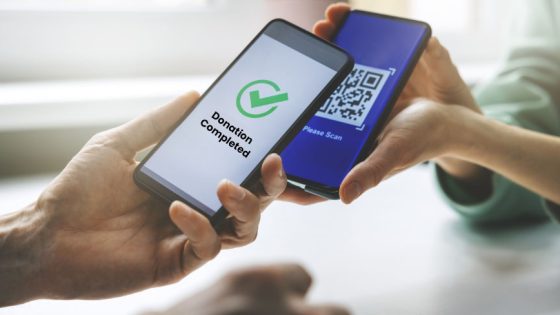Nonprofits spend a lot of time trying to engage donors in hopes that they will renew their contributions each year. However, we often overlook other vital strategies on how to build donor relationships—approaches that not only benefit the organization but also make it easier for staff to raise funds and enhance the prospective lifetime value of these connections.
Donors contribute because they’re passionate about your mission, and that passion can extend beyond the checkbook. To truly deepen their involvement, nonprofits must create opportunities for donors to engage beyond their financial contributions. By staying closely connected to the organization—whether through engaging content, volunteering, advocacy, or helping to raise funds—you foster long-term relationships that will increase their likelihood of contributing again. Over time, this continued involvement can also lead to significant planned gifts in the future.
Understanding Donor Motivations
Donors are motivated to give for various reasons including their personal values and beliefs, interest in the issue area, the reputation of a nonprofit, and the perceived need of the issue. Fascinatingly enough, according to the Bank of America Study on High Net Worth Giving, 48.4% of those surveyed identified that they or someone they know benefited from the organization.1
Building Trust as the Foundation for Relationships
One of the least discussed aspects of building relationships between donors and an institution comes down to a simple concept: trust. Trust is the foundation of any donor relationship. The staff, Board, and volunteers who build relationships with donors must recognize the importance of being honest, open, and transparent—not just about the organization’s successes but also its challenges.
A transactional approach—where a donation is received, acknowledged, and the relationship fades—doesn’t cut it. Donors today are more sophisticated and understand the complexities nonprofits face. Consistent, genuine communication is essential for building strong, lasting donor relationships.
Personalized Engagement: Connecting with Donors on a Deeper Level
Beyond building trust, you must make the engagement between your donor and your organization personal. The easiest way to do this is by having meaningful conversations with your donors. While many nonprofits are stretched thin with staff and resources, it’s paramount that leadership spends time understanding donor motivations, whether those are foundations, corporations, or individuals.
Every donor has a unique reason for giving. By uncovering these motivations, you can craft a story that resonates and brings them closer to your organization’s impact.
For example:
- A corporate donor invested in homelessness prevention may not only offer financial support but also use their expertise to help your nonprofit access housing opportunities.
- An individual donor who lost a loved one to a disease your organization addresses may become an advocate, using their time, talent, and treasure to support your cause.
Recognizing the Lifetime Value of Donors
One of the most powerful concepts in the philanthropic space today is the “lifetime value of donors.” This involves looking at the overall giving a donor makes to an organization throughout their lifetime. The first step is getting them to renew their initial gift and grow their connection—financially or through volunteer efforts. Over time, these connections can result in significant transformational contributions.
While time is often a barrier, it’s important to prioritize meaningful ways to engage donors through your nonprofit’s work.
Engagement Strategies That Work
To build long-lasting relationships, it’s essential to recognize the lifetime value of donors and engage them in meaningful ways. To achieve this, nonprofits can use strategies like volunteering, advocacy, and collaborative fundraising to deepen connections and inspire ongoing support.
- Volunteer Engagement: Fostering a Deeper Connection
Many of your donors likely started as volunteers or continue to volunteer. You can also use volunteer opportunities to bring non-volunteer donors closer to your organization. By volunteering, donors can see your mission in action. This firsthand experience helps them understand the complexity of your work and the impact of their philanthropy. - Advocacy Campaigns: Mobilizing Donors for Broader Impact
Advocacy is a powerful way for volunteers and donors to understand how your nonprofit strengthens the community. Nonprofits cannot support specific candidates in elections, but they can lobby legislators or community leaders to inspire action. Donors and volunteers can participate in advocacy efforts by writing letters, attending events, or supporting legislative days where nonprofits share their mission with policymakers. These actions help amplify your nonprofit’s voice and allow donors to see how their involvement directly impacts the community. - Engaging Donors in Fundraising: Improving the Ask
Beyond advocacy and volunteering time in the programmatic work of the nonprofit, another way to bring donors close to the action is getting them involved in asking other donors for money. Professional fundraisers exist because asking for money can be uncomfortable for many. However, engaging volunteer Board members and donors in the fundraising process can be highly effective. Even if they don’t make the direct ask, they can accompany staff to share their personal stories and motivations for giving.
The qualitative benefit of bringing a donor along to engage another donor is the simple act of recognizing that two different people see the collective impact of a nonprofit from different perspectives but continue to recognize the powerful contribution. The nonprofit makes in the community. It can be argued that there is power in amplifying the voice of your donor base through the process of cultivation and solicitation of other donors.
How to Build Donor Relationships that Last
Building meaningful, long-lasting relationships with donors goes beyond the annual request or occasional campaign. It’s about recognizing that donors are driven by personal motivations, values, and a passion for your cause. By engaging donors in multiple ways—through volunteering, advocacy, or even involving them in the donor development process—you create a deeper connection that strengthens their commitment to your organization.
Trust, transparency, and personalized engagement are the foundation of these relationships, which, in turn, help secure long-term support, renew gifts, and even lead to transformational contributions over time. By focusing on this holistic approach to donor engagement, your nonprofit will cultivate a loyal, invested donor base that will support your mission for years to come.
Ready to elevate your donor relationships? Let us help you transform your donor engagement strategy. Contact us today for personalized guidance that inspires action and drives long-term impact.
1 https://www.privatebank.bankofamerica.com/articles/2023-bank-of-america-study-of-philanthropy.html






